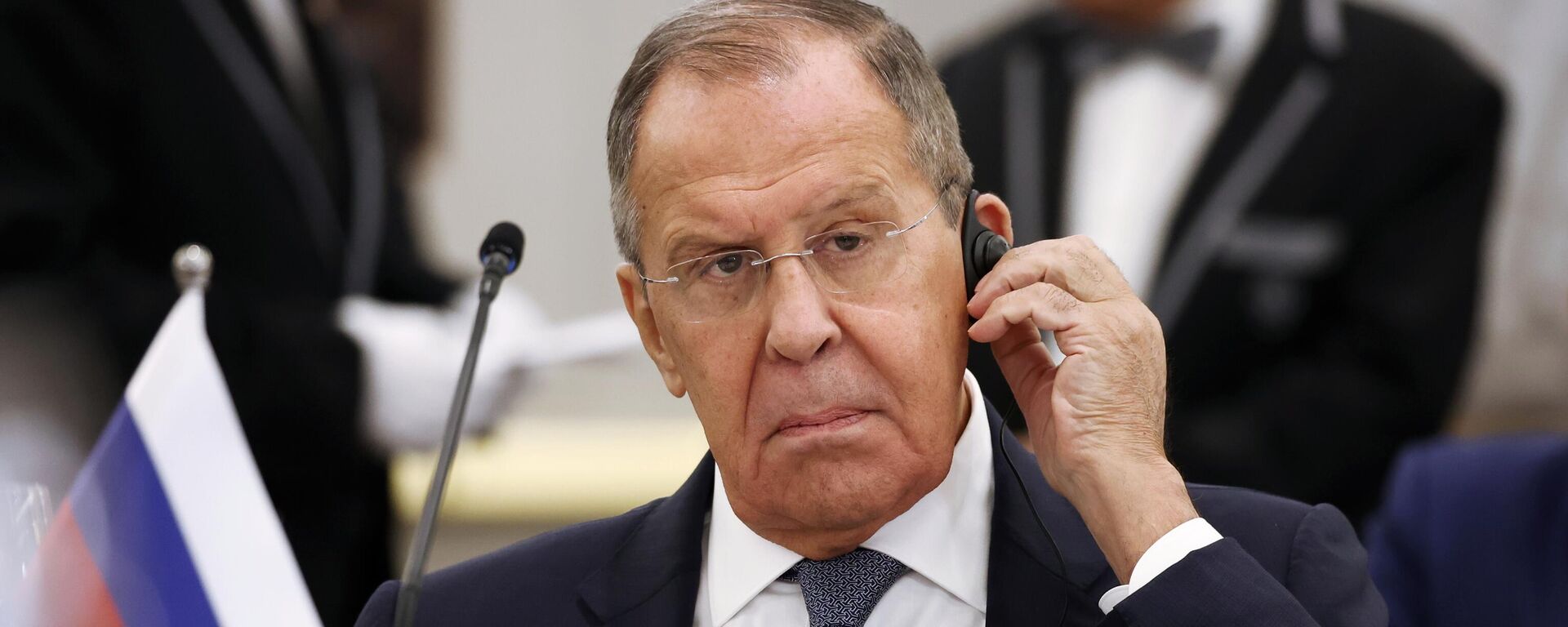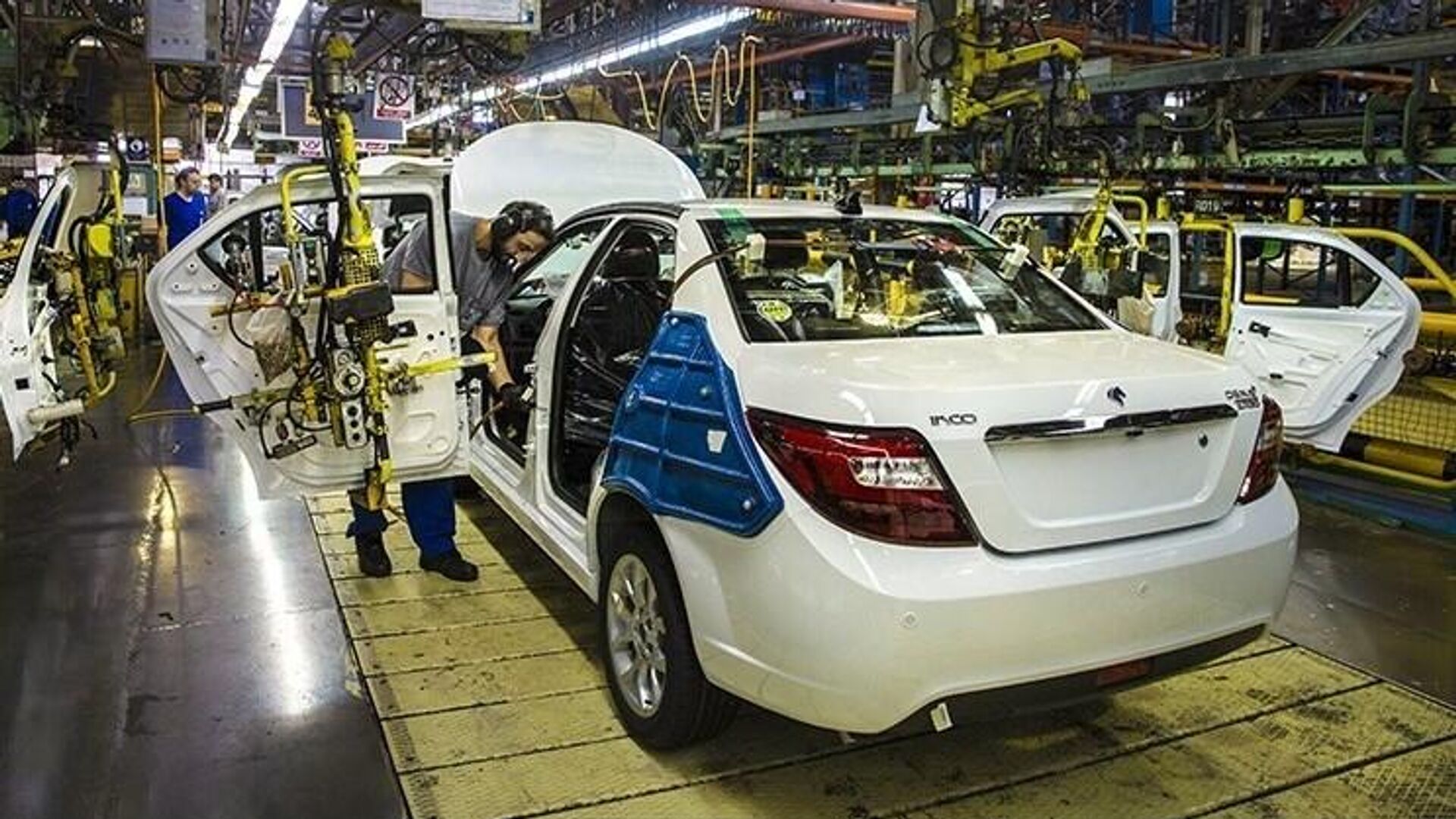https://sputnikglobe.com/20231022/russia-and-iran-plot-course-to-tariff-free-trade-1114410640.html
Russia and Iran Plot Course to Tariff-Free Trade
Russia and Iran Plot Course to Tariff-Free Trade
Sputnik International
Russia and Iran have dramatically ramped up bilateral economic, investment and security cooperation in recent years, and are putting the finishing touches on a strategic partnership agreement promising to take relations to a new level. Iran became a full member of the Shanghai Cooperation Organization in July, and joined the BRICS bloc in August.
2023-10-22T14:39+0000
2023-10-22T14:39+0000
2023-10-22T14:58+0000
economy
sergey lavrov
hossein amir-abdollahian
iran
russia
eurasian economic union
eeu
free trade
free trade zone
free trade agreement
https://cdn1.img.sputnikglobe.com/img/07e7/0a/16/1114410134_0:112:744:530_1920x0_80_0_0_460bf523dee825f610371792d828e90c.jpg
Russia and Iran are plotting a course to cut trade tariffs down to zero by early 2024, Iran-Russia Joint Chamber of Commerce member Kambiz Mirkarimi has indicated.Speaking to local media on Sunday, Mirkarimi said that he expects outstanding customs, tariffs, and competitive market issues between Iran, Russia, and other members of the Eurasian Economic Union to be settled before the end of the current Iranian calendar year (March 20, 2024).Mirkarimi’s comments add weight to Belarusian media reports from Saturday that Iran and the EEU (whose members include Russia, Belarus, Armenia, Kazakhstan, and Kyrgyzstan) plan to sign a new free trade agreement by the end of the year, with draft work on the pact said to be complete and ready for signature.The new free trade pact will replace an interim agreement forged in 2019, which expired last year but was renewed until a new agreement could be signed.Russian Foreign Minister Sergey Lavrov will travel to Tehran on Monday for talks with senior officials, with regional cooperation in the political, economic, transport, energy and security spheres, as well as Armenian-Azerbaijani tensions, expected to be on the agenda. Representatives from Georgia, Armenia, Azerbaijan and Turkiye will also be in attendance, with the 3+3 format talks focusing on efforts to resolve regional problems without Western interference.Mirkarimi stressed the importance of the creation of new transport and shipping-related infrastructure to ensure further growth in bilateral trade with Russia. Both countries have expressed interest in an ambitious new trade route known as the North-South Transport Corridor, which will link Russia to India via Iran and further help shift Russian trade from linkages with Europe toward Asia. Rail, road, and maritime infrastructure related to the project is being built, with cargo transport along the route’s three major planned arteries expected to reach 45 million tons per year by 2030.Russia and Iran are also working to finalize a long-awaited 20-year strategic partnership agreement, with Iranian Foreign Minister Hossein Amir-Abdollahian saying last month that Lavrov’s visit to Iran would help put the finishing touches on the pact.Russian-Iranian trade turnover reached the equivalent of $4.9 billion in 2022, and reportedly approached the $5 billion mark during the first half of 2023. The two countries have ambitious plans to expand trade ties to up to $40 billion in the coming years.Russia and Iran, which are both facing heavy sanctions pressure from the West, have great potential to complement one another’s economic development, with agricultural products constituting nearly 80 percent of their current trade balance (Russia delivering wheat, other grain products, and fertilizers, in exchange for top quality, GMO-free Iranian fruits and vegetables).The recent uptick in trade has been achieved in part through increases in the back-and-forth purchase and sale of industrial machinery and components, including car parts, polystyrene, machine tools, metals, and products for use in the chemical industry, as well as textiles, footwear, and pharmaceuticals. Amid the exit of major Western and Japanese car brands from the Russian market, Iranian carmakers hope to join Chinese brands in replacing them.The two nations agreed to ramp up trade as much as possible in rubles and rials last year. A year on, Russian officials have said that as much as 80 percent of trade is now being done in the two countries’ respective national currencies, the ruble and the rial. Earlier this year, media reported on possible plans to introduce a cryptocurrency stablecoin backed by gold.
https://sputnikglobe.com/20231022/russian-foreign-ministry-confirms-lavrovs-talks-in-tehran-on-monday-1114404826.html
https://sputnikglobe.com/20231012/scoop-iran-ready-to-help-russia-create-new-grain-corridor-1114139747.html
iran
russia
Sputnik International
feedback@sputniknews.com
+74956456601
MIA „Rossiya Segodnya“
2023
News
en_EN
Sputnik International
feedback@sputniknews.com
+74956456601
MIA „Rossiya Segodnya“
Sputnik International
feedback@sputniknews.com
+74956456601
MIA „Rossiya Segodnya“
russia, iran, islamic republic, trade, tariffs, agreement, increase, noth-south trade corridor, investment, currency, strategic cooperation
russia, iran, islamic republic, trade, tariffs, agreement, increase, noth-south trade corridor, investment, currency, strategic cooperation
Russia and Iran Plot Course to Tariff-Free Trade
14:39 GMT 22.10.2023 (Updated: 14:58 GMT 22.10.2023) Russia and Iran have dramatically ramped up bilateral economic, investment, and security cooperation in recent years, and are putting the finishing touches on a strategic partnership agreement promising to take relations to a new level. Iran became a full member of the Shanghai Cooperation Organization in July, and joined the BRICS bloc in August.
Russia and Iran are plotting a course to cut trade tariffs down to zero by early 2024, Iran-Russia Joint Chamber of Commerce member Kambiz Mirkarimi has indicated.
Speaking to local media on Sunday, Mirkarimi
said that he expects outstanding customs, tariffs, and competitive market issues between Iran, Russia, and other members of the Eurasian Economic Union to be settled before the end of the current Iranian calendar year (March 20, 2024).
Mirkarimi’s comments add weight to Belarusian
media reports from Saturday that Iran and the EEU (whose members include Russia, Belarus, Armenia, Kazakhstan, and Kyrgyzstan) plan to sign a new free trade agreement by the end of the year, with draft work on the pact said to be complete and ready for signature.
The new free trade pact will replace an interim agreement forged in 2019, which expired last year but was renewed until a new agreement could be signed.
Russian Foreign Minister Sergey Lavrov will travel to Tehran on Monday for talks with senior officials, with regional cooperation in the political, economic, transport, energy and security spheres, as well as Armenian-Azerbaijani tensions, expected to be on the agenda. Representatives from Georgia, Armenia, Azerbaijan and Turkiye will also be in attendance, with the 3+3 format talks
focusing on efforts to resolve regional problems without Western interference.

22 October 2023, 11:19 GMT
Mirkarimi stressed the importance of the creation of new transport and shipping-related infrastructure to ensure further growth in bilateral trade with Russia. Both countries have expressed interest in an ambitious new trade route known as the
North-South Transport Corridor, which will link Russia to India via Iran and further help shift Russian trade from linkages with Europe toward Asia. Rail, road, and maritime infrastructure related to the project is being built, with cargo transport along the route’s three major planned arteries expected to reach
45 million tons per year by 2030.
Russia and Iran are also
working to finalize a long-awaited 20-year strategic partnership agreement, with Iranian Foreign Minister Hossein Amir-Abdollahian saying last month that Lavrov’s visit to Iran would help put the finishing touches on the pact.
Russian-Iranian trade turnover reached the equivalent of $4.9 billion in 2022, and
reportedly approached the $5 billion mark during the first half of 2023. The two countries have ambitious plans to expand trade ties to up to $40 billion in the coming years.

12 October 2023, 13:48 GMT
Russia and Iran, which are both facing heavy sanctions pressure from the West, have great potential to complement one another’s economic development, with agricultural products constituting nearly 80 percent of their current trade balance (Russia delivering wheat, other grain products, and fertilizers, in exchange for top quality, GMO-free Iranian fruits and vegetables).
The recent uptick in trade has been achieved in part through increases in the back-and-forth purchase and sale of industrial machinery and components, including car parts, polystyrene, machine tools, metals, and products for use in the chemical industry, as well as textiles, footwear, and pharmaceuticals. Amid the exit of major
Western and Japanese car brands from the Russian market, Iranian carmakers hope to join Chinese brands in replacing them.
The two nations
agreed to ramp up trade as much as possible in rubles and rials last year. A year on, Russian officials have said that as much as 80 percent of trade is now being done in the two countries’ respective national currencies, the ruble and the rial. Earlier this year, media
reported on possible plans to introduce a cryptocurrency stablecoin backed by gold.




